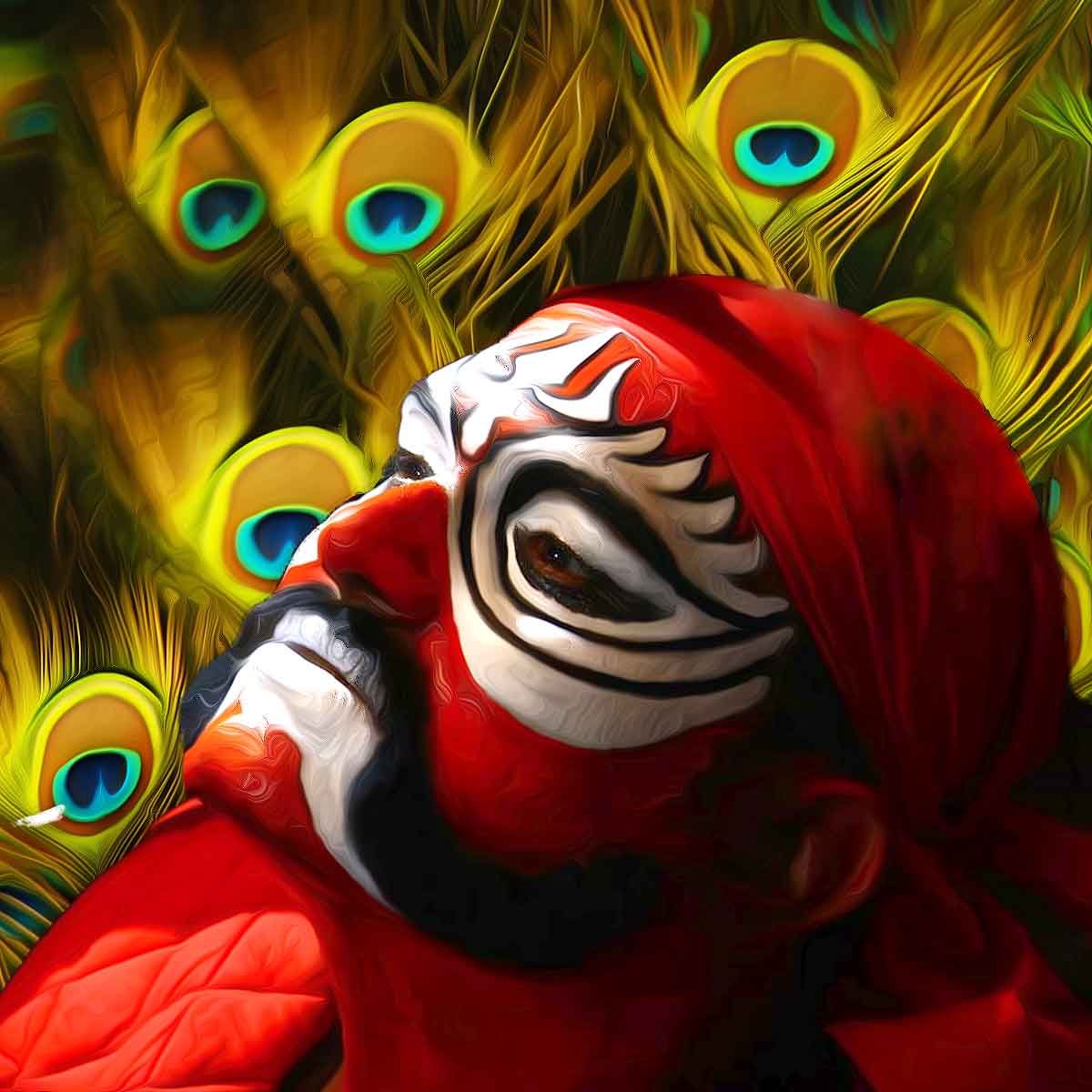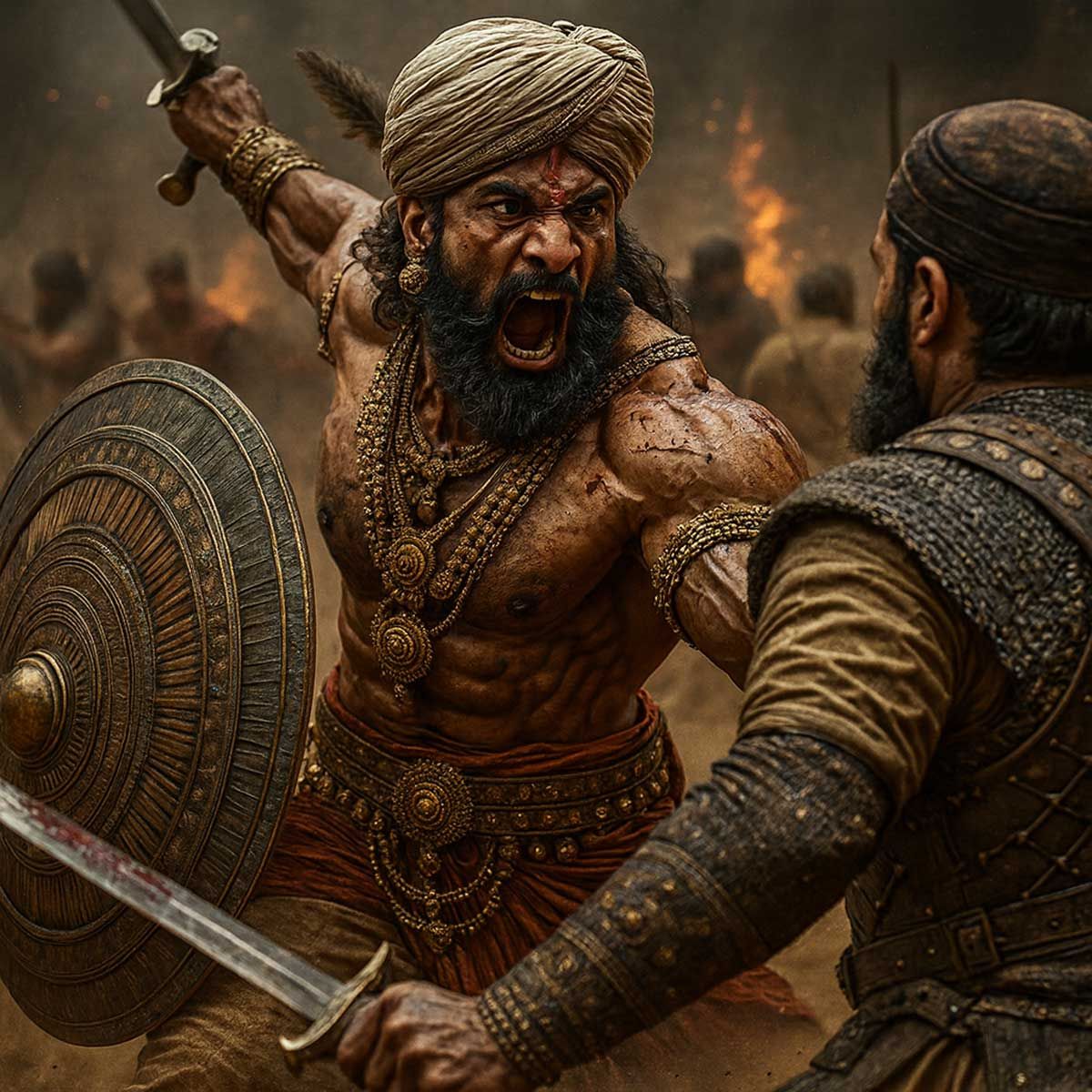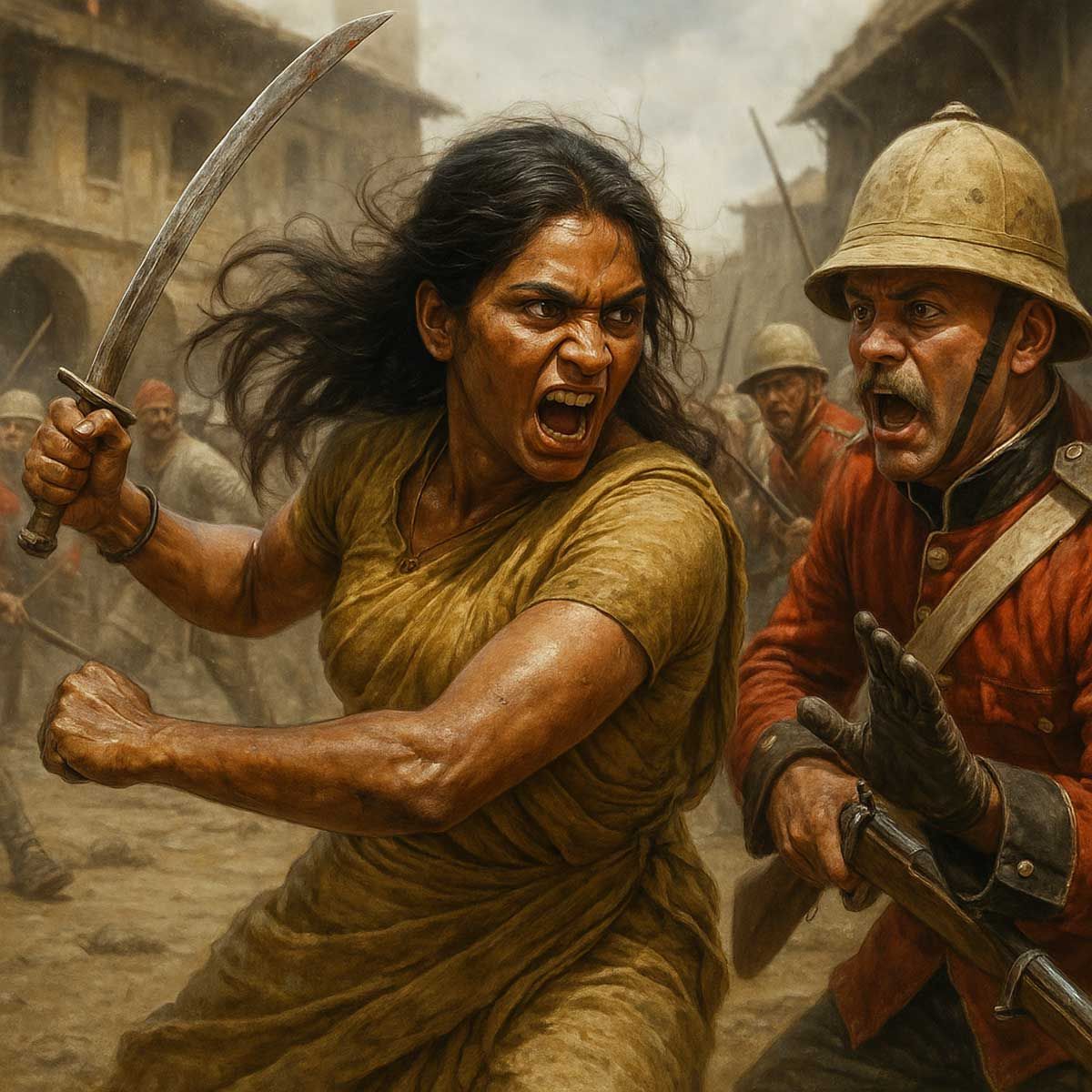More Coverage
Twitter Coverage
Satyaagrah
Written on
Satyaagrah
Written on
Satyaagrah
Written on
Satyaagrah
Written on
Satyaagrah
Written on
Join Satyaagrah Social Media
“If we are to preserve culture we must continue to create it”: Bedara Vesha of Sirsi town is a unique folk dance with a legend of 300 years which is performed every alternate year to celebrate largest Holi festival of Karnataka, also known as Hunter Dance

The sweet aroma of jaggery, the sound of traditional mortar and pestle, the continuous chatter of relatives, and loud playful children are the signs of a festival in Uttara Kannadahouse .there are hundreds of festivals in a year.
|
New Year starts with Sankranti where everyone exchanges sankrantiyellu and jaggery. Mahashivaratri which is the festival of lord shiva sees maximum pilgrimage flow from neighboring states.
During rathasapthami, in the month of February and March, many old temples celebrate teru in the whole District. SirsiMarikamba fair is one of the largest fairs of Karnataka, Suggi, Celebrated during Holi is the most important festival of tribal communities such as halakki, Marathi, kunubi, and Siddi. Ugadi is an important festival, which is the New Year start as well for many communities. Men from these communities walk kilometers to visit different houses in different villages and perform their traditional dance. Come April and May, it is the season of BandiHabba, a folk festival of farmers to seek blessings of village deities before the big sowing months during monsoon. Different communities take part in this and celebrate together with Harmony. In the monsoon months, June and July, everyone gets busy with farming activities.
Then come various festivals such as Nagapanchami, Bhoomihunnime, Krishna Janmashtami, Ganesh Chaturthi, Eid, Ramzan, Tulsipooja, and many more. After September the common festivals such as Dasara, Deepavali, Muharram, and Christmas are celebrated in a great variety of traditions and customs unique to Uttara Kannada.
|
The main tribes of the district are Siddi, kunabi, halakki, Gonda and Gouli
- Gonda live mainly in the forest of Bhatkaltaluk
- Halakki tribes call themselves direct descendants of the Hindu God Shiva
- Kunabi tribes said to have migrated from the Goa region
- Goulis are nomadic tribes who migrated from Maharashtra
- Siddis are said to have been brought by the Portuguese from southeast Africa
- It is said to have more than 50 tribal and sub-communities living in the Uttara Kannada district.
Agriculture is the main occupation of the people of Uttara Kannada with paddy being the main crop. The other primary crops are sugarcane, cotton, Ground nut, and Jowar. The main horticulture produce includes coconut, areca, Cashew, Bananas, Mango, pepper, and Cardamom
- Agriculturists and pastoralists colonized this region between 1000 BC and 300 AD
- Today agriculture Is the lifeline of about 75% of the people in Uttara Kannada
- Paddy legumes and sugarcane are important agricultural crops in the district
- There are more than 40 traditional varieties grown in the district
- Banana is also widely cultivated and the varieties are Boodibale,chipsbale, Currybale, Karibale, Mitka, Mysore mitka, Nenibale, Rasabale, Pachebale, Sakkarebale.
- Arecanut is cultivated in nearly 10,000 ha. Off land and the other cash crops of the district are cashew, coconut, pepper, and cardamom.
- Apiculture is also one of the important professionals of the district producing nearly 10,000 to 14,000 kgs of Honey.
- Kagga rice, a unique variety of rice grown in tidal wetlands of Aghanashini estuaries
- Kumta onion which is sweet, and used for consumption is very popular and grown only in kumta.
- Gokarana green chilly is one of its kinds used to make spicy dry chilies for storage.
|
Bedara Vesha
Bedara Vesha is a folk dance performed days before Holi night in Sirsi town of Karnataka. It is also known as ‘Hunter Dance’. People of Sirsi celebrate Holi with this unique folk dance every alternate year. It attracts a large crowd from different parts of the state on all five days of Holi.
Bedara Vesha’ is a unique folk dance with a legend of 300 years. According to the legend, after the reign of ‘Vijayanagar Kings’, Sirsi (then Kalyanapattana) and other southern India regions were taken over and ruled by the Sonda dynasty.
In the Sonda region, there was always a fear of Muslim invaders attacking. In order to protect them, the rulers appointed ‘Malleshi’, a young boy from the Beda community and a warrior in the Vijaynagar Empire. Initially, Malleshi performed his duties well, but later, he became a troublemaker and a womanizer. He wanted to marry Rudrambika, who was the daughter of local leader Dasappa Shetty. She was bold and fearless; for the interest of society, she married Malleshi One Holi night, while Malleshi was dancing, Rudrambika threw acid in his eyes which made him blind. He then tried chasing to kill her but was caught by 12 villagers and burnt alive.
In appreciation of rudrambika’s sacrifice, ‘Bedara Vesha’ was started and is performed even today.
The Hunter Dance is practiced for months before the actual performance. The artists are donned with peacock feathers, mustaches, cotton, red cloth, fruits, shield, and swords. Two ropes are tied to the belly of the performer and two people will hold the ropes to the back of that gigantic bundle of peacock feathers, depicting to stop the Malleshi from killing the people who come in his place. The dance will be supported by the hand drum(Tamate) players to give a rhythm to the dance. The Hunter Dance performer starts from his local street and goes on performing to the various locations of Sirsi town overnight. The concluding part of the dance will be at the Shri Marikamba Temple. The dancer performs at his complete rage there. He again starts performing in the other locations of Sirsi town till daylight.
There are multiple performers. In each area, there will be one person who will represent and dance throughout the city. There are some designated places where the dance will be in full form and each performer will visit those designated places once. It is also said that one dancer isn’t supposed to look at the other face to face.
Bedara Vesha is performed in the Sirsi town of Karnataka. Another folk dance called ‘Dollu Kunitha’ is also performed during Bedara Vesha.
|
Modern form
Nearly 50 solo artists perform the hunter dance with whistle-blowers and a troupe of drum beaters. In modern times various performances will be going on the streets along with The Hunter Dance. The Hunter Dance event is an enjoyable night out for the youngsters of the town. In recent years(2019) Hunter Dance organizers will also bring DJs to the streets, and the whole of Sirsi town has got a club-like look in recent times to entertain the viewers more.
References:
 Support Us
Support Us
Satyagraha was born from the heart of our land, with an undying aim to unveil the true essence of Bharat. It seeks to illuminate the hidden tales of our valiant freedom fighters and the rich chronicles that haven't yet sung their complete melody in the mainstream.
While platforms like NDTV and 'The Wire' effortlessly garner funds under the banner of safeguarding democracy, we at Satyagraha walk a different path. Our strength and resonance come from you. In this journey to weave a stronger Bharat, every little contribution amplifies our voice. Let's come together, contribute as you can, and champion the true spirit of our nation.
 |  |  |
| ICICI Bank of Satyaagrah | Razorpay Bank of Satyaagrah | PayPal Bank of Satyaagrah - For International Payments |
If all above doesn't work, then try the LINK below:
Please share the article on other platforms
DISCLAIMER: The author is solely responsible for the views expressed in this article. The author carries the responsibility for citing and/or licensing of images utilized within the text. The website also frequently uses non-commercial images for representational purposes only in line with the article. We are not responsible for the authenticity of such images. If some images have a copyright issue, we request the person/entity to contact us at This email address is being protected from spambots. You need JavaScript enabled to view it. and we will take the necessary actions to resolve the issue.
Related Articles
- For the first time in the history of Tirupati, 30 devotees on foot stopped from reaching temple for carrying musical instruments up Tirumala hill by TTD: Devotees perform Nama Sankeerthanam during the journey
- Biggest Wonder of the World : Kitchen of Lord Shri Jagannath
- Manyavar commercial featuring Alia Bhatt vilifies Hindu wedding ritual Kanyadaan: Why not object Western practice of ‘giving away the bride’ and Nikah (marriage contract)
- Jagannath Temple administration issues clarification on proposed sale of temple lands
- An Artisan Heritage Crafts Village: Indigenous Sustainability of Raghurajpur
- The forgotten temple village of Bharat: Maluti
- "Look deep into nature, and then you will understand everything better": Himachal - International Kullu Dussehra Festival, starts with a procession of Lord Raghunath, carried on a Ratha across town, 8000 women perform folk dance wearing traditional outfit
- Temple city Madurai grandly celebrated the Chithirai festival, devotees thronged streets, got darshan of deities Meenakshi, Sokkanathar, and Kallazhagar: “Govinda” “Hara Hara” chants reverberated in Madurai with pomp
- Dharm / Sanskriti
- "People without knowledge of their past history, origin & culture is like a tree without roots": Assamese Bhaona - traditional art with religious messages of truthfullness & dharma, created by 6th century saint-reformer Mahapurush Srimanta Sankardeva
- A new symbol of Hindutva pride, Shri Kashi Vishwanath Temple Corridor
- 'Preserving state’s Cultural Heritage is important so Non-Hindus in Char Dham Yatra will have to undergo verification': Uttarakhand CM Pushkar Singh Dhami after concerns raised by Hindu religious seer
- "With every breath, I plant the seeds of devotion, I am a farmer of the heart": Perhaps, Manipuri Raas Leela is the best form of Leela prevailed in India of spiritualism in Vaishnavishm & classical dances based on devotion of Meera of Rajasthan for Krishn
- RTI reply revealed that keys to the treasure room 'Ratna Bhandar' of Puri Jagannath temple which has a lot of gold, silver, and precious jewels donated by devotees and kings over the centuries have been ‘missing’ since 1970: Odisha
- Shri Murudeshwar Temple: Home To The World’s Second Tallest Shiva Statue
























